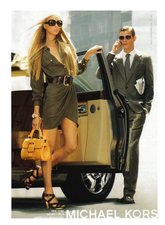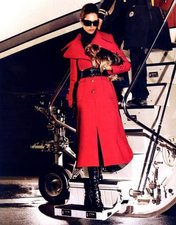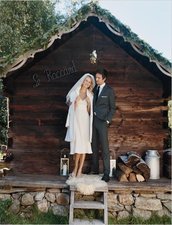Using Storytelling to Differentiate Your Brand
As an editor, it’s my job to note every brand out there, which means long days combing trade show aisles, pouring over Web sites and reading the press information in my inbox. Obviously I can only select a finite number of companies to profile so my goal is to find the most interesting items to relate to my readers. Similarly, buyers and their customers only have so much money to spend. We’re all making decisions based on the brands, products and stories that speak to us.
Start At The Beginning
Any sales rep, PR professional or journalist will tell you that it’s much easier to sell a collection that has novel attributes. If a sales clerk can alert shoppers to the fact that mothers halfway around the world have found employment thanks to the creation of this line or if a publicist can tout the many luminaries a designer worked for before striking out on his own, the collection already has an edge over all others. Smart marketers know having beautiful, well-made garments is essential, but not enough. With hundreds of vendors in each product category, if they don’t come up with a compelling, cohesive tale their labels could end up a mere footnote in the industry.
So maybe right about now you’re thinking you have nothing to say. You make prewalkers or pjs and while you love them, they’re not feeding starving children a world away and your design pedigree doesn’t include boldface names. Rest assured, you too have a story. Take a moment and reflect on your brand’s origin. How did it come about? How has it evolved? What’s your inspiration? Push beyond the obvious. Yes, you started your collection because you had a child and whipped up something cute that ended up winning raves at your playgroup. Fine, but what led you to make that first item? Is it reminiscent of the tragically hip mini dresses your mom styled you in back in the 70s, does it reflect the laidback, seaside summers you aspire to reclaim, or did you stitch it on the same machine your grandmother spent hours at making her own clothes? There’s a reason why you do what you do. Tell that story.
Stay in Character
Take Michael Kors. He wrote the book on classic American sportswear but his fashion empire rests on more than flattering sheaths and smart pencil skirts. He’s been able to create a fictional world that encompasses all aspects of this customer’s life. Think of his ads, they all depict a jet set young woman hurrying from one high-octane appointment to another. She looks chic, pulled together and ready for anything. This is the Michael Kors brand. It starts with the clothes and lives through consistent brand imagery from ads to hangtags, and catalogs to shop-in-shops.
Take a page from established designers and ensure your branding, marketing collateral and Web site all interrelate. Everything you create should support your branding. Each season Kors is able to turn out a collection filled with new ideas, but he remains true to the brand’s DNA. For instance, the color palette, while spiked with the hue of the moment, is always grounded in earth tones led by the brand’s signature camel.
Think of your spring line as the next chapter in a book or the latest novel in a series. People are addicted to narratives like Harry Potter and The Bourne series but these sequels would never have made the leap to cultural phenoms if the authors had lost the thread of the original tale. Similarly with apparel, once you’ve won fans for your line, they’re anxious to see more of the same from you. If you’ve established yourself as the go-to for high-quality grandma grabbers, a turn toward contemporary silhouettes and edgy color palettes would be out of character and alienating to fans.
Jenna Lyons, president and executive creative director of J. Crew, recounted to Vogue magazine the retailer’s misstep when it jumped on the one-shoulder trend. “I know when we’ve made a wrong turn,” she told the magazine. “I mean, there was a time when we did one-shouldered tops! For J. Crew! I get it now that it doesn’t matter if asymmetry is the biggest trend in the world — it doesn’t belong here.”
Like J. Crew, all designers and merchandisers must communicate trends in a way that makes sense for their customers and edit out the looks that don’t fit. It’s not a matter of churning out the same thing season after season, rather it’s speaking to that same customer and finding new ways to satisfy their demands. Do you have the same laser focus on your core customer that Kors and J. Crew have? Have you thought about her lifestyle? Her needs? What makes her tick?
Plot Your Course
Your brand — and your customer — will evolve as time goes by. But for your brand to survive, it must remain true to your point of view and heritage. For instance, Burberry is now a cool, hip brand on the leading edge of technology but that wasn’t always the case. Back in the day, it was a fusty, functional trench coat resource. Ultimately, the label underwent a makeover but instead of closing the book on its history, trench coats are at the heart of Burberry’s design and marketing story. (Visit http://artofthetrench.com to see the brand’s ode to its origins.)
Still unconvinced that narrative matters? Take Kate Spade. By its own admission, the brand had gained a reputation for turning out uptight, irrelevant product. To resurrect its fun, quirky image, executives there started with how the label represents itself online. “Our website is where you can delve into the story behind the products and inspiration,” stated Kyle Andrew, Kate Spade’s senior vice president of marketing. “Digital brings our voice to life.” Through vibrant, energetic posts on the company blog, Andrew and his team have created a visual language that sets the tone for the brand. Andrew credits this approach with boosting sales because visitors become engaged with the Kate Spade world.
From cyberspace to the real world, shoppers are looking for their clothes and favorite labels to speak to them. As you pull together your spring collections and marketing materials, ask yourself what, if anything, your collection is saying. Further, try to come up with a “Hey, did you know?” detail you could recount at the show. Those little tales could be just the thing to pique an editor’s curiosity or tempt a buyer into taking a chance on your line.
About Caletha Crawford
The Giggle Guide™ is pleased to welcome Caletha Crawford as a contributor to our “Business Sense” feature. Her industry experience, journalism expertise and candid opinions about challenges and solutions for small businesses are sure to be of interest and value to children’s retailers, manufacturers and service providers.
Caletha Crawford is an expert in the children’s apparel, accessories and gift industries. Her career has been focused on the business and fashion trends that drive this segment of the garment industry, most recently as the editor-in-chief of Earnshaw’s magazine. There, she kept readers abreast of contemporary market concerns, providing them with invaluable insight into how the industry was evolving and challenging them to reevaluate their strategies. Her keen market analysis has influenced prominent players to adopt new business practices and update product selections.
Caletha continues her commitment to aiding emerging design talent through her role as part-time faculty at Parsons The New School for Design. She also writes frequently for a variety of publications, assists companies with their PR efforts and consults with apparel and accessories businesses on branding, launch strategies and marketing.
For more information, visit www.calethacrawford.com or email
















